About the exhibition
For the past two years, the artists have traveled around Hardanger studying the collections of Ingebrigt Vik and Johan Havaas, read up on reports and literature and patiently examined plants and landscapes, science and folklore. The iconic and political nature of the landscape in Hardanger was present early in Norway’s nation building, and the idea of who we are and how we manage our heritage has not been fully discussed. What do we see where we travel, and what stories do we create from what we see?
The title is taken from Renæssance (Renaissance), a short story Norwegian author Hans E. Kinck pub-lished in 1899. In this story, Kinck depicts the sensuous visual impressions through the eyes of a young artist who, awake to legends and natural mysticism, takes in the light that falls over the marsh and the sound of the stream’s unstoppable journey. Driven by strong ambitions, the artist transforms his experience of nature into a classic and recognised form. In Kinck, the classical view is characterised by an attitude in which man rules over nature, which sharply contrasts with a view where nature has its own life and value. The artist gains a reputation through his works, but along the way loses his fine-tuned sense of nature, and with that, himself. The view of man as ruler is hard currency in the management of nature. The societal consequences of not extracting as much of the resources as possible are deemed a great loss. Still, this is a dilemma that worries more and more people.
In the video works by Ingrid Book & Carina Hedén, nature is thoroughly mapped, but remains enigmatic, even a little scary. A report from a Geological Survey of Norway on pollution in soil samples led the artists to unexpected places in Odda and Tyssedal. In one work we can follow the water’s journey through pipes and watercourses; in the video Øya (the Island), darkness slowly falls over an islet in the fjord. A wondering eye finds different creatures and archetypes hidden between trees and moss in the forest. Much is about seeing connections and possible links between views of culture and nature. Into the complex installation, which is based on Kinck’s short story Renæssance (Renaissance), they have invited a selection of sculptures by the late Ingebrigt Vik that draw on the classical heritage and a Norse legend.
Per Christian Brown has also borrowed sculptural sketches by Vik. They are unfinished, on their way to becoming something, and can be seen as a tangible reference to the plants Brown has photographed. They are also on their way, driven by the inevitable growth of nature. The film refers to the essay Earth and Reveries of Repose, where the philosopher Gaston Bachelard reflects on the root’s creative force and basis for life, with long and powerful limbs drilling deep into the earth. Plants, soil and water feature heavily in our universal idea of the unruly force of life. In the photo series Der Wurzelmensch 1-8 (Root Man), body and roots merge into images with references to mythological transformations, inspired by the work Metamorphoses by the poet Ovid.
Thorbjørn Sørensen not only grabs the roots, he literally takes hold of the whole plant. They have been collected on the other side of the fjord, in Herand for the most part. He transported the plants over the mountain before studying them carefully with a scrutinizing eye. The long-term relationship these meticulous watercolors require evoke a sense of empathy, a warmth. A dead great spotted woodpecker is depicted with a superfine brush. A quiet monument to a brief moment of life. Mounted on the windows facing the fjord, we can see the watercolors as a zooming lens, aimed at tiny details far away.
Hege Nyborg’s paintings appropriate and negotiate a motif from a folio work published in 1799 by doctor and botanist Robert John Thornton, The Temple of Flora: or Garden of the Botanist, Poet, Painter and Philosopher. The lens, or rather optics, as a prosthesis for vision is central to her work. The gaze, analyzing, contemplating, keeps nature at a distance. With language, we create places and links that do not exist in reality. The photographs and text drawings from Johan Havaas’s collection in the Granvin folk museum is based on this insight. Collected and registered cryptogams and crustal lichens, dried and isolated as objects, but at the same time noticeably real, belonging to the speechless nature. It is perhaps here that the boundary between nature and science is dissolved, in a world based on our ability to treat pieces of knowledge as something meaningful in themselves.
Helene Sommer displays a video work where the gaze comes from a distant future. Here, the district of Hardanger as a physical location has disappeared, except for the dialect. A woman who wonders what she sees in some old film footage discovered during an excavation. The footage shows images of modern-day Hardanger, including recordings from the research station NIBIO Ullensvang. She tries to make sense of these fragments of a foreign world and place them in an imaginary landscape. The soundtrack is from 1970s sci-fi TV series Blindpassasjer by Jon Bing and Tor Åge Bringsværd. The time that has eroded away Hardanger plays a less prominent role in her postcard collages. Here, Sommer has combined postcards from different times, but with the same motive. Analogue color photographs from the 1970s and black-and-white ones taken almost 150 years ago, combined with Sommer´s own photographs not only demonstrates how time changes the landscape, but also how the technology in the image shapes how we see our surroundings.
Man is the creator of his world. This applies not only to the things we make, but also to what we see and understand of nature. Kinck rounds off the short story with an image. After its long journey out into all the waters of the world, the water always returns. Dripping down over the high mountains before it once again gathers in streams and flows down over rocks and sand, past the gray scree on its way out into the world’s oceans.
Text: Sissel Lillebostad
Videos from the exhibition
Ingrid Book & Carina Heden
Ingrid Book and Carina Hedén presents the videos The Island, Water og The Test Points (2019). These are a part of the installation Renaissance, which is inspired by a short story by the Norwegian author Hans E. Kinck (1865-1926).
The installation is put together by 3 videoworks, a series of photos, sculptures, objects and works by the sculptor Ingebrigt Vik (1867-1927).
The video The Test Points was filmed in the industrial societies Odda and Tyssedal, Hardanger 2019-2020
Per Christian Brown – The Root
Helene Sommer – Sagn om jord
Glimpses from the exhibition
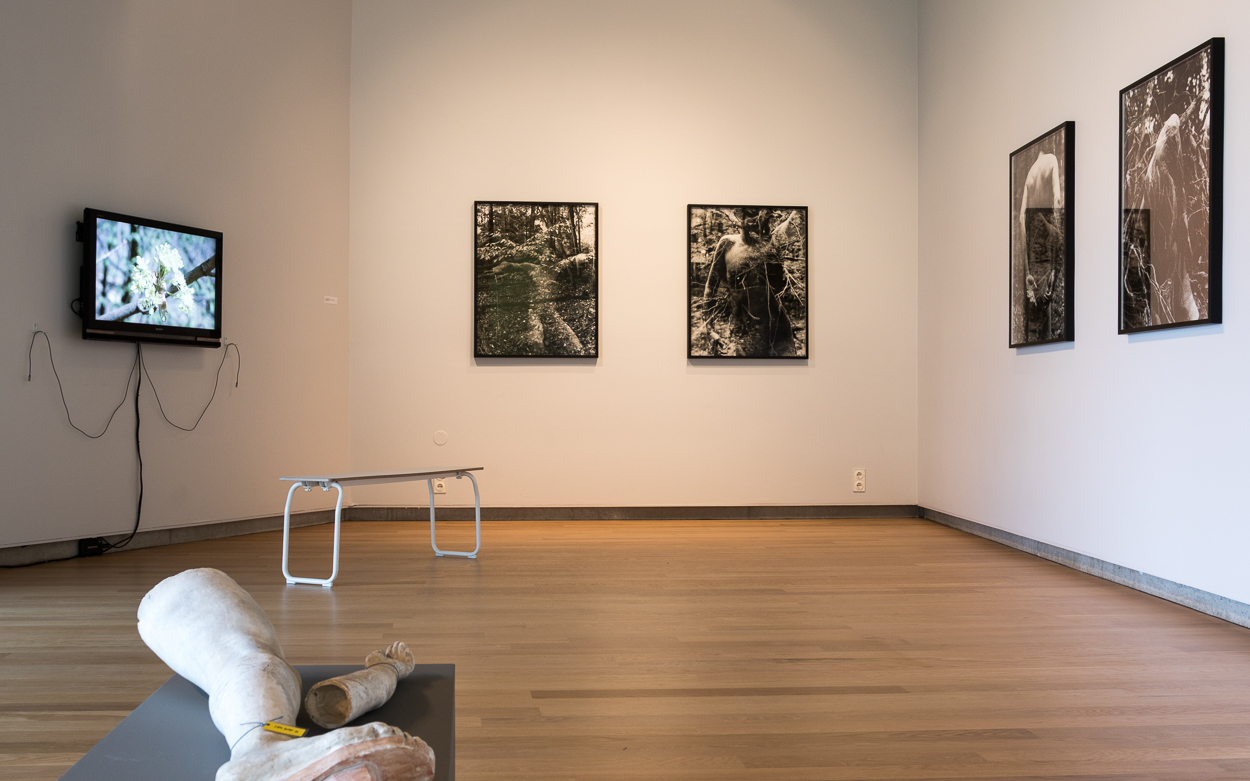
Per Christian Brown, The Root, 2021, video
Per Christian Brown, Der Wurzelmensch, 2021, series of silver gelatin print
Photo: Per Christian Brown
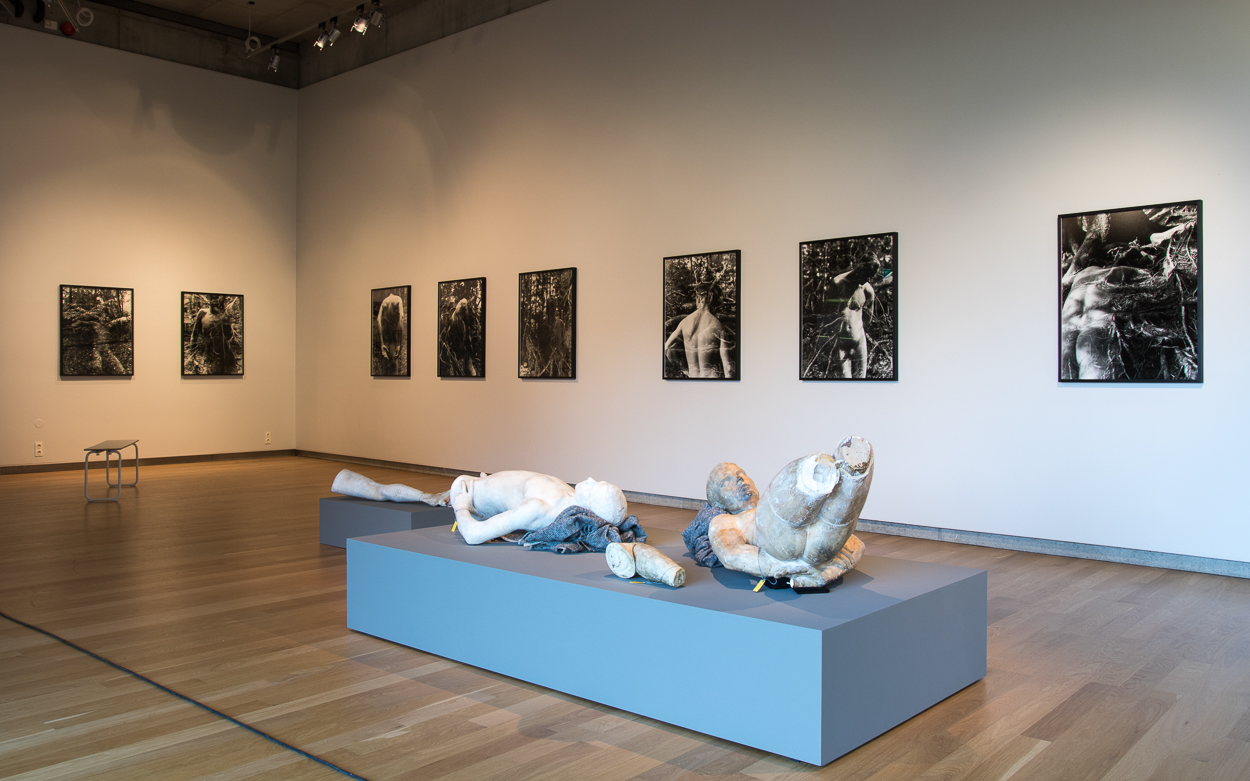
Per Christian Brown, Der Wurzelmensch 1-8, 2021, silver gelatin print
Plaster casts from the collection of Ingebrigt Vik Museum
Photo: Per Christian Brown

Thorbjørn Sørensen, Watercolours, 2021
Photo: Per Christian Brown

Thorbjørn Sørensen, Watercolours, 2021
Photo: Per Christian Brown

Hege Nyborg, Naturens vidundere, 2021
Hege Nyborg, Nattergal (Luscinia luscinia), 2021
Hege Nyborg, Bleiktjafs (Evernia prunastri), 2021
Photo: Per Christian Brown
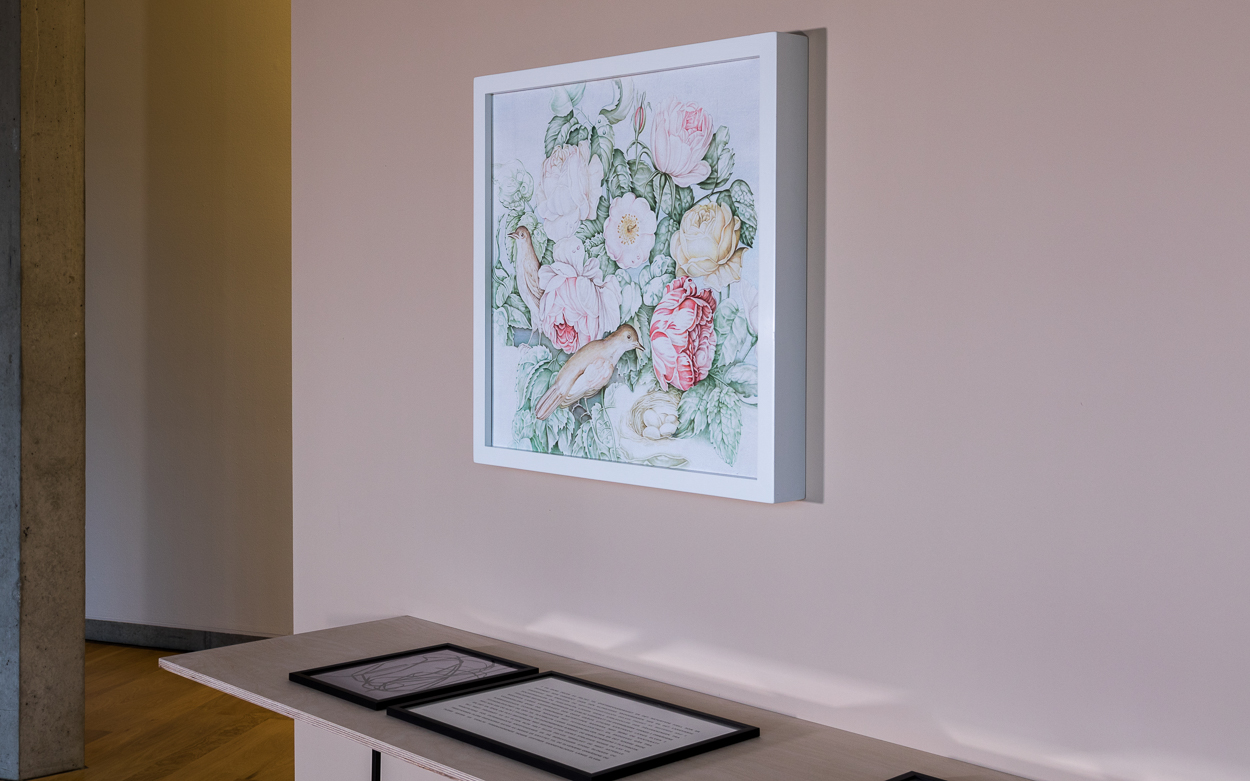
Hege Nyborg, Naturens vidundere, 2021
Hege Nyborg, Our Brief Eternity, 2021
Photo: Per Christian Brown
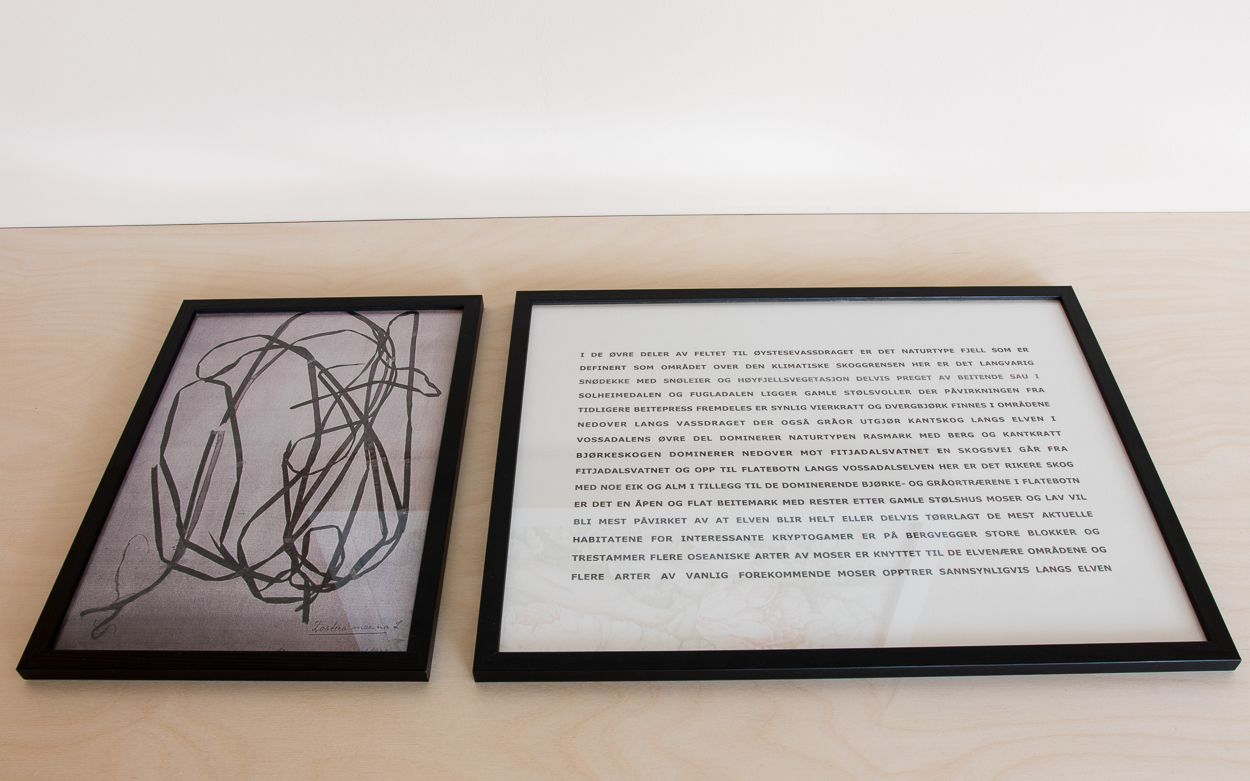
Hege Nyborg, Our Brief Eternity, 2021
Photo: Per Christian Brown
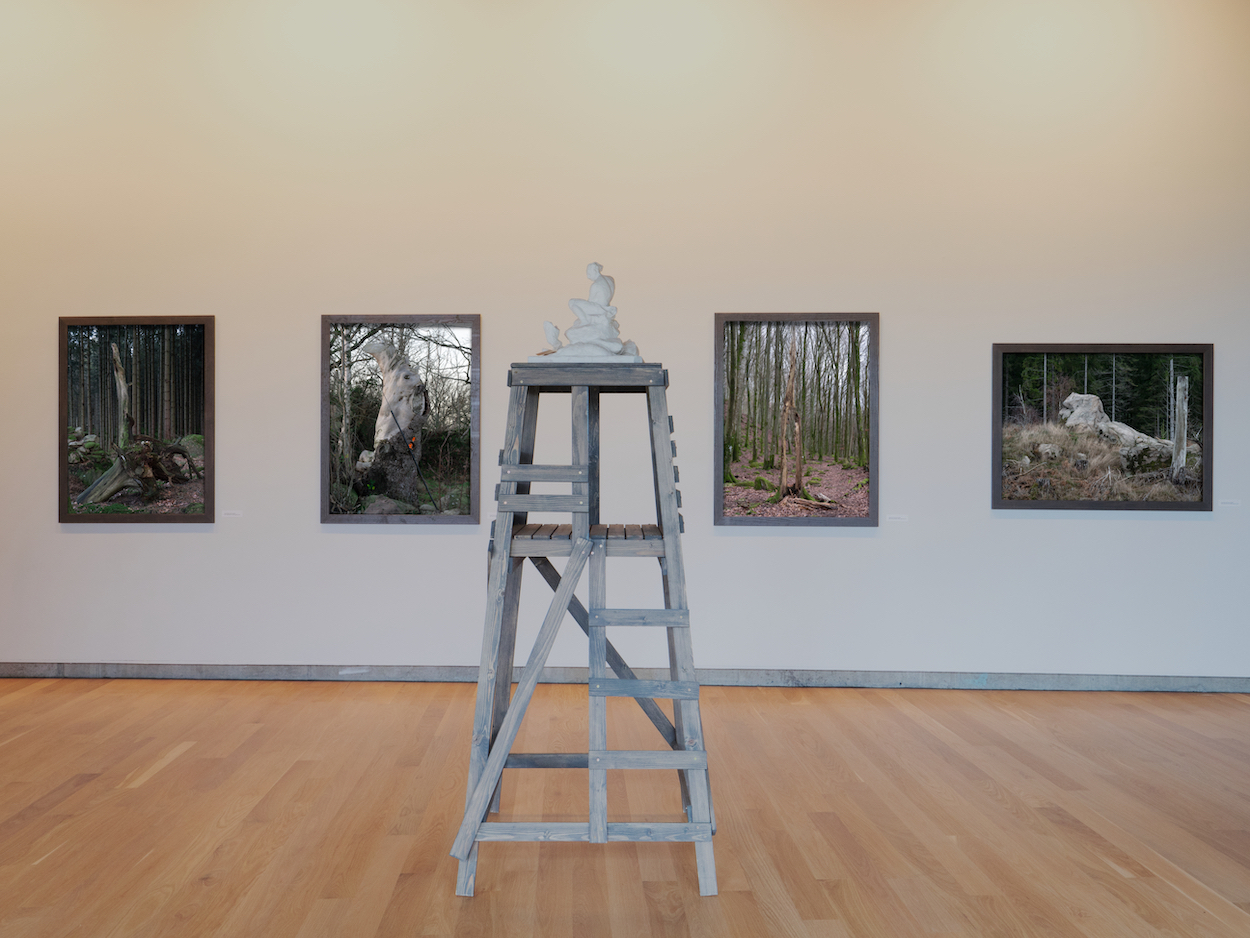
Ingrid Book & Carina Hedén, from the installation RENAISSANCE, 2021:
Ingrid Book & Carina Hedén, Tree stand, 2021, wood, for Tor and the Midgard Serpent, sketch plaster, 1922, from the collection of the Ingebrigt Vik museum
Ingrid Book & Carina Hedén, from the photo series Works #7-13, 2020, pigment prints
Photo: Carina Hedén
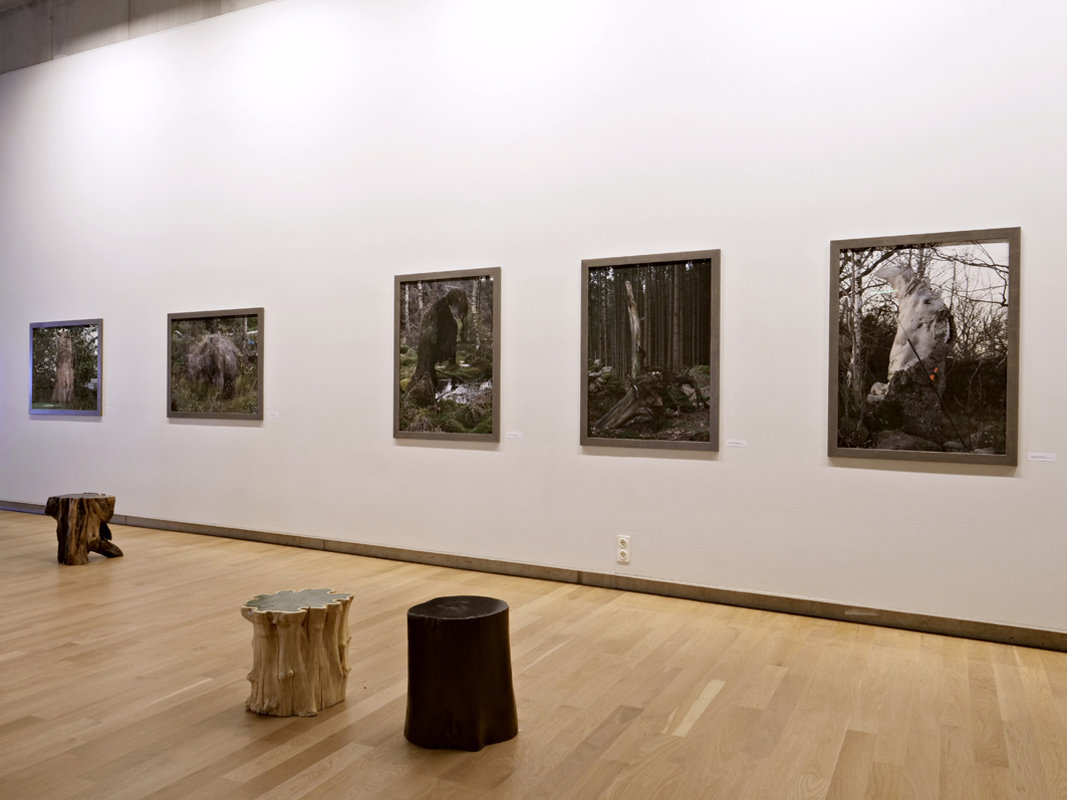
Ingrid Book & Carina Hedén, from the installation RENAISSANCE, 2021:
Ingrid Book & Carina Hedén, from the photo series Works #7-13, 2020, pigment prints
3 Root Stools in tropical hardwood
Photo: Carina Hedén
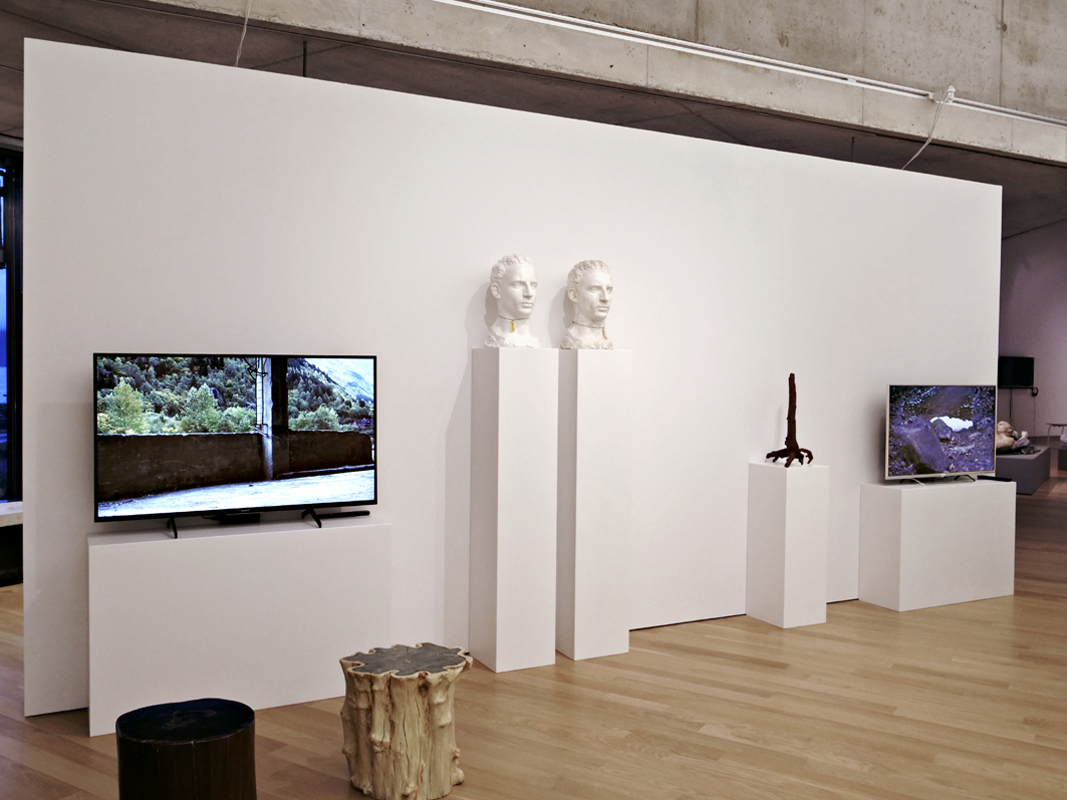
Ingrid Book & Carina Hedén, from the installation RENAISSANCE, 2021:
Ingrid Book & Carina Hedén, The Test Points, 2021, video
Ingebrigt Vik, 2 male heads, 1913, plaster
Ingrid Book & Carina Hedén, Root, Caput Mortuum, 2021
Ingrid Book & Carina Hedén, Water, 2021, video
Photo: Carina Hedén
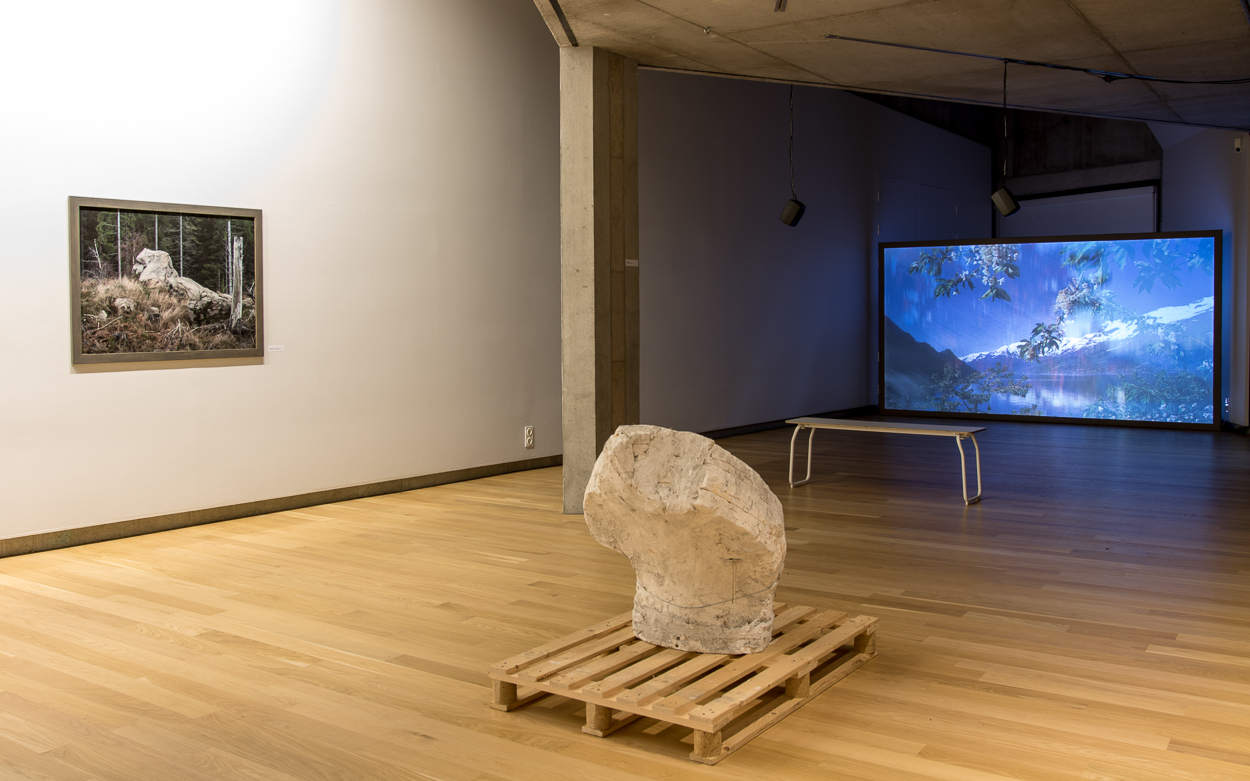
Ingrid Book & Carina Hedén, from the installation RENAISSANCE, 2021:
Ingrid Book & Carina Hedén, Work (sfinx) #11(13), 2020, pigment print
Plaster mold for Ynglingen, 1913, from the collection the Ingebrigt Vik museum
Helene Sommer, Sagn om jord, 2021, video
Photo: Per Christian Brown

Overview of the exhibition
Photo: Per Christian Brown